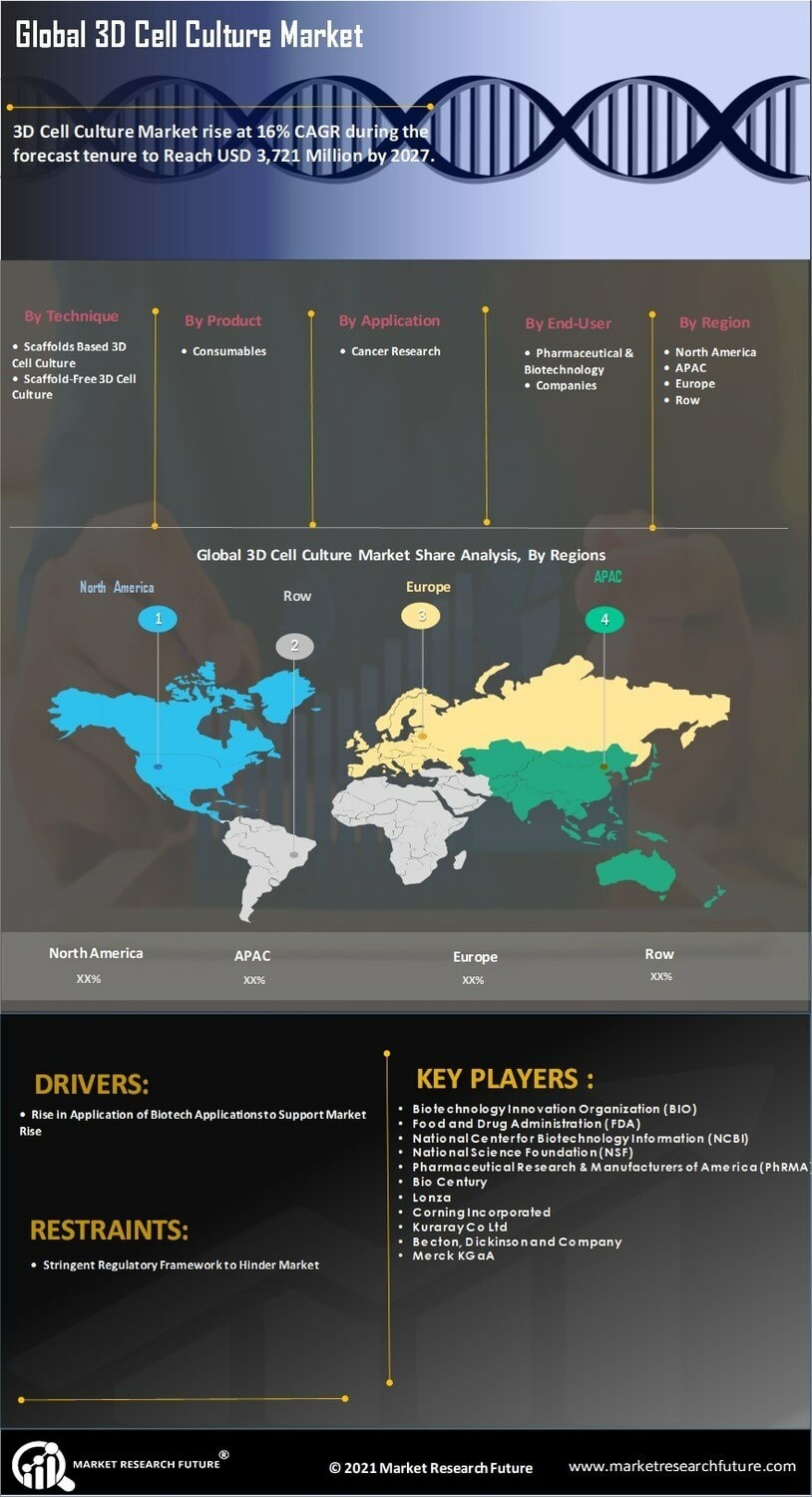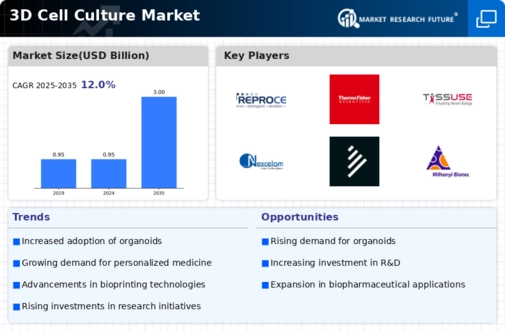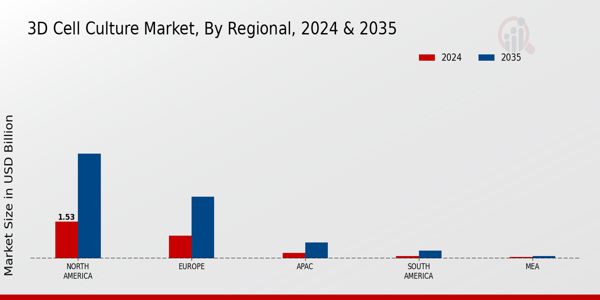Market Growth Projections
Growing Applications in Cancer Research
The Global 3D Cell Culture Market Industry is increasingly recognized for its applications in cancer research. 3D models provide a more accurate representation of tumor microenvironments, enabling researchers to study cancer progression and treatment responses more effectively. This capability is crucial for developing targeted therapies and understanding drug resistance mechanisms. As cancer remains a leading cause of mortality worldwide, the demand for innovative research tools is paramount. The market's expansion is further supported by collaborations between academic institutions and biotechnology firms, which aim to leverage 3D cell culture technologies for groundbreaking cancer therapies.
Rising Demand for Advanced Drug Testing
The Global 3D Cell Culture Market Industry experiences a notable surge in demand for advanced drug testing methodologies. Traditional 2D cultures often fail to accurately mimic in vivo environments, leading to high failure rates in drug development. In contrast, 3D cell cultures provide a more physiologically relevant model, enhancing predictive accuracy. This shift is particularly evident as pharmaceutical companies seek to reduce costs associated with late-stage clinical trial failures. The market is projected to reach 0.95 USD Billion in 2024, with a compound annual growth rate of 11.02% anticipated from 2025 to 2035, potentially reaching 3 USD Billion by 2035.
Increased Focus on Personalized Medicine
The Global 3D Cell Culture Market Industry is significantly influenced by the growing emphasis on personalized medicine. As healthcare shifts towards tailored therapies, 3D cell cultures offer a platform for developing patient-specific models. These models facilitate the testing of drug responses based on individual genetic profiles, thereby enhancing treatment efficacy. This trend is bolstered by advancements in genomics and biotechnology, which enable the creation of more sophisticated 3D models. Consequently, the market is expected to expand as researchers and clinicians increasingly adopt these technologies to improve patient outcomes and reduce adverse drug reactions.
Regulatory Support for Innovative Research
Regulatory bodies are increasingly recognizing the potential of 3D cell cultures in research and development, thereby influencing the Global 3D Cell Culture Market Industry positively. Initiatives aimed at promoting alternative testing methods to animal models are gaining traction, as they align with ethical considerations and scientific advancements. Regulatory agencies are encouraging the adoption of 3D cell culture technologies for toxicity testing and drug development, which could lead to faster approvals for innovative therapies. This supportive environment is likely to foster investment in 3D technologies, further propelling market growth as stakeholders seek to comply with evolving regulations.
Technological Advancements in Cell Culture Techniques
Technological innovations play a pivotal role in shaping the Global 3D Cell Culture Market Industry. The introduction of novel scaffolding materials, bioreactors, and microfluidic systems enhances the capabilities of 3D cell cultures. These advancements allow for better nutrient and oxygen distribution, mimicking the natural tissue environment more closely. As a result, researchers can achieve improved cell viability and functionality. The integration of automation and artificial intelligence in cell culture processes further streamlines workflows, making it easier for laboratories to adopt 3D technologies. This trend is likely to drive market growth as institutions seek to enhance research efficiency and reproducibility.












